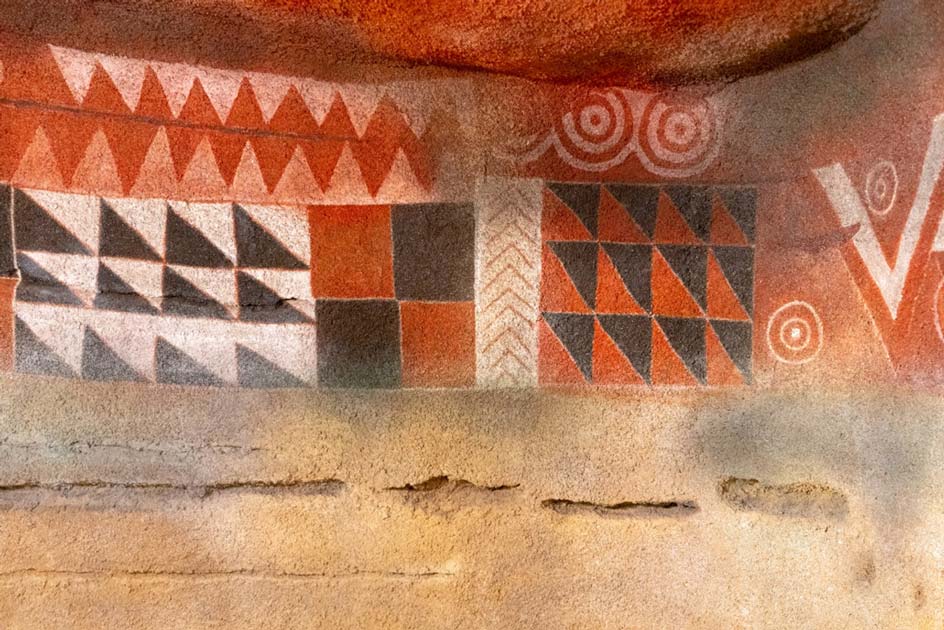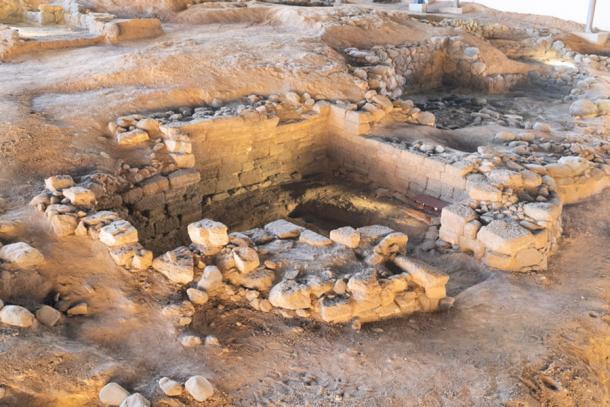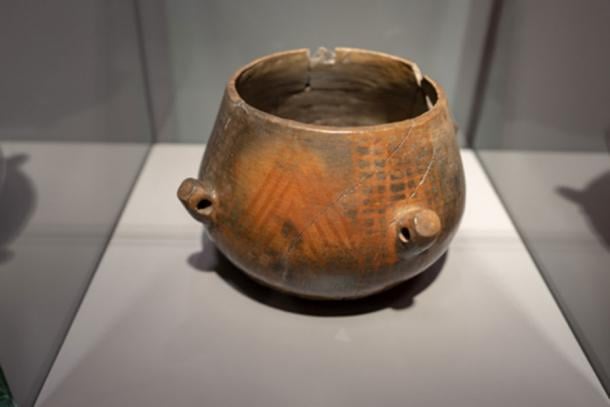
CUEVA PINTADA: PAINTED CAVE OF GRAN CANARIA REVEALS MYSTERY OF ANCIENT INHABITANTS
from ancient-origins.net
In 1862, in the center of the Spanish town of Galdar, an incredible archaeological discovery was made while agricultural work was being undertaken. Through a hole in its roof, the extraordinary Cueva Pintada (Painted Cave) was discovered for the first time in generations and a time capsule of pre-Hispanic culture on the island was revealed.
It was immediately apparent the cave was special – the walls are adorned with beautiful paintings – but when excavations at the site began in 1987, it quickly became clear that Cueva Pintada was a site of international significance, bringing to life the culture and society of the people who inhabited the site between the 7th and 16th centuries AD.
The Troglodyte Complex
Cueva Pintada is located in a former agricultural smallholding. Due to the fertile nature of the land in the region, much of the surrounding area was developed into parcels of cultivated land surrounded by buildings from the 17th century onward. Cultivation and development of the land meant that the pre-Hispanic ruins in the region were initially buried, which helped to preserve them, and it was preparations for agricultural work that the site was once again unearthed.
The word ‘cave’ usually brings to mind thoughts of deep dark recesses in rock, with awe inspiring stalactites hanging from the ceiling and, perhaps, the archetypical ‘caveman’ dwelling within. But Cueva Pintada is not a cave in this traditional sense – it is an extraordinary feat of human engineering.
The painted chamber, which gives the site its name, lies at the heart of a network of man-made caves. The entire network is known as the Troglodyte Complex because it formed an underground group of dwellings.
The houses of the Troglodyte Complex are dug out of toba (compressed volcanic rock) and are clustered around the Cueva Pintada. Archaeologists have surmised this was the heart of the community as the houses are most densely packed together around the painted chamber and become more sparsely laid out further away. The site would have been the capital of the island in pre-Hispanic times.

The Painted Cave
The Cueva Pintada, at the center of the Troglodyte Complex, was clearly of great significance to the people who lived at the site. The walls of the chamber are decorated with polychromatic murals, dating from around the 12th century. These painted friezes are the best and most intricate surviving examples of indigenous art in Gran Canaria and they are only part of what makes Cueva Pintada so special.
Painting the cave required a specialist and refined techniques. The rough surface of the volcanic rock which forms the walls of the cave had to be smoothed out using layers of mortar and then polished with a special mixture of clay. After the wall was smoothed out, a design would be sketched, and then the clay would be moistened so paint would be more easily absorbed. Different colored paints were applied, either by hand, or with brushes made of goat hair or reeds. The paints used were made from minerals – ochre was used for red and whitened clay for white. The designs at Cueva Pintada would have been particularly difficult to achieve and the amount of symmetry within them is unique in pre-Hispanic artwork of this nature.
Who Lived There?
The site offers a glimpse into the lives of the Gaunche people who were living in pre-Hispanic Gran Canaria occupying the site at a particularly exciting time in the island’s history. It is believed the island was settled by people from Africa less than 3000 years ago, but there is much mystery surrounding the settlement of Gran Canaria, as the people did not know how to sail when they were contacted in the 16th Century.
At the height of its indigenous population there were around 20,000 people living on the island. They lived in large villages in both houses and caves, including the man-made caves such as Cueva Pintada. The Gaunche culture was complex with a rich and well developed hierarchy (including nobility), political system, and polytheistic religion. They were an agricultural society and cultivated grains, they also raised sheep, goats, dogs, and pigs.
The Gaunche culture was varied and the customs on each of the Canary islands were not always the same. One striking example of this is the ways in which criminals were handled. Although they were punished by courts on all of the Canary islands, on Fuerteventura all criminals would be executed by having their head crushed by a large rock and on Gran Canaria only murderers would be executed.
By the time the Cueva Pintada was abandoned there were only about 3000 indigenous Gran Canarians left living on the island due to the colonization of the island by Castilians who deported and enslaved most of the native populations.

What Was it For?
Although painting the walls of dwellings and ritual structures was not uncommon in pre-Hispanic culture, the complexity of the designs was of great interest to archaeologists and anthropologists who wanted to determine the use of the chamber.
It has been argued that the paintings represent an elaborate kind of calendar, with the red and white representing lunar and solar elements. It is believed the knowledge of the calendar was held by people in positions of power in the society. Keeping track of the seasons and the passage of time was particularly important in agricultural societies such as that at Cueva Pintada and so anyone able to accurately track time would have been highly respected.
The Gaunche people held many ceremonies throughout the year. Their biggest festival was called “beñesmen” and it was held after the harvest of fruits and grains. However, there were many other festivals throughout the year where people would meet to socialize, play sports, and trade. These festivals were so important to the Gaunche that if tribes were at war during a festival, a truce would be called so that everyone could celebrate.
As festivals were such a big part of Gaunche society, the theory that the paintings in Cueva Pintada were some sort of calendar makes sense – being able to determine when each festival was going to take place was important in their culture.
Other Theories
While the elaborate painting in the cave is largely considered a calendar, the way the cave was used is more of a mystery.
There has been extensive excavation at the site and with a wide number of artifacts to study, in conjunction with written sources on Gaunche culture, archaeologists have been able to build up a picture of how the cave may have been used.
Although burial customs varied across Gaunche tribes, mummification was prevalent, and several mummies have been discovered in the Cueva Pintada. This would suggest the cave was used as a burial chamber, but there were also vessels, utensils, and other artifacts.
At the heart of the most important pre-Hispanic site in the canary islands, Cueva Pintada and the Troglodyte Complex were of obvious significance to the Gaunche people and the painted cave itself must have been particularly special.
After the Spanish colonized the Canary Island, many of the native Gaunche people were killed or deported, and their culture and buildings were lost. Today, there are a number of sites which help us to see how the Gaunche lived on a day to day basis. But Cueva Pintada offers something more special and unique – a look into the more esoteric aspects of Gaunche life and the mysterious rituals and festivals that made their culture unique.

